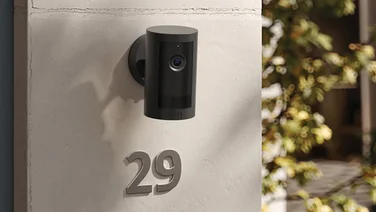To help us provide you with free impartial advice, we may earn a commission if you buy through links on our site. Learn more
- Google Nest Protect 2nd Generation review: What do you get for the money?
- Google Nest Protect 2nd Generation review: How easy is it to set up?
- Google Nest Protect 2nd Generation review: What does it do well?
- Google Nest Protect 2nd Generation review: What could it do better?
- Google Nest Protect 2nd Generation review: Should you buy it?

- Stylish design
- Informative alerts
- Event tracking and notifications
- Expensive
- Limited integration with other Google Nest products
The original Nest Protect pretty much created the smart alarm category – and it has led it ever since. Why? Because Nest didn’t simply give the smoke/carbon monoxide alarm a facelift and an Internet connection, but rethought what people wanted from a modern alarm system.
Google’s second-generation version, originally launched in 2015, didn’t mess much with the formula, but it’s still the best smart smoke and CO alarm.
Google Nest Protect 2nd Generation review: What do you get for the money?
A stylish, low-profile white unit measuring 134 x 134mm and standing 41mm high. The top is mostly covered with a patterned white mesh with its large, central button surrounded by a glowing LED-illuminated ring. Vents on all four sides bring in air for checking by optical smoke and CO sensors.
The second generation Nest Protect improves on the first by using a specially designed split-spectrum sensor, combining an infrared photoelectric sensor with a second blue LED.
This detects not just the large particles created by slow, smouldering fires, but the smaller particles created by fast-flaring blazes. In theory, this gives you more warning if a fire suddenly flares up.

On top of this, the Nest Protect incorporates temperature and humidity sensors, ambient light and motion sensors, plus a chemical CO sensor that lasts ten years.
All this connects through Wi-Fi to Nest’s services in the cloud, plus the Nest smartphone app, which provides near-instant event notifications to your smartphone. I tested the battery version of the Nest Protect (which takes six AA batteries), but there is a wired version available as well.
Google Nest Protect 2nd Generation review: How easy is it to set up?
Set up is simple. Just install the Nest app, then run through the Add Device process, scanning the QR code on the bottom of the unit. The Nest Protect’s six lithium batteries are pre-installed, and as long as you have an existing Google account and know your Wi-Fi network name and password, all goes smoothly.
Much the same goes for the physical installation, which involves mounting a circular plastic plate to your ceiling then inserting and twisting the Nest Protect into position. The app lets you assign specific Nest Protect units to rooms in your home, so you can fit multiple units around the house and get location-specific alerts.
Google Nest Protect 2nd Generation review: What does it do well?
For once, the word smart doesn’t just mean “internet connected”. You can test and silence the alarm from the Nest app itself, without having to reach up to press the button. When the Nest Protect senses the first wisps of smoke, it doesn’t go straight to a full-bore alert. Instead, you get a voice alarm that it’s detected smoke and a notification through the app, which then kicks into the full alarm should smoke levels rise.
When that happens, the Nest Protect gets loud; I measured the output at 98.7dBA from a 1m distance. Notifications on your smartphone will tell you when smoke is detected and in which room, and give you real-time updates on whether the smoke is clearing or has reached emergency levels. If you have Nest cameras in the room they can also record the event, while multiple Nest Protect units will broadcast the alert throughout the home.

The Nest Protect isn’t the fastest unit to detect smoke. Blasted with a smoke alarm test spray for 3 seconds from a 50cm distance, it took 7.12 seconds to register an alarm. This is a fairly average result, though, and not necessarily a fair representation of the split-spectrum sensor’s capabilities, as it didn’t have the heat and smaller particles data to work with that it would have in a real fire.
Finally, the Nest Protect has one useful bonus feature: it can use its motion sensor to detect movement below it, then switch on the LED ring to provide low-light illumination in the dark. It’s a useful extra, though it will have some impact on battery life. The supplied lithium AA batteries should last you half the ten-year lifespan of the unit, though we’ve no meaningful way to test whether that’s the case. Users online give mixed reports of between three and five years.
Google Nest Protect 2nd Generation review: What could it do better?
The Nest Protect hasn’t had any feature updates in a while, and integration with other Google and Nest products could be better. For instance, I found no way to get an alarm relayed through a connected Nest Mini speaker, or to silence alerts using Google Assistant with the same.
Google Nest Protect 2nd Generation review: Should you buy it?
This is still the most stylish, effective and thoughtfully designed smart smoke alarm I’ve tested, but also the most expensive, at £95 to £105 per unit. If you need two or more, the costs soon mount up. Arguably it’s worth it for the sensor technology and slick user experience, but more basic smart smoke alarms are now available for less.







